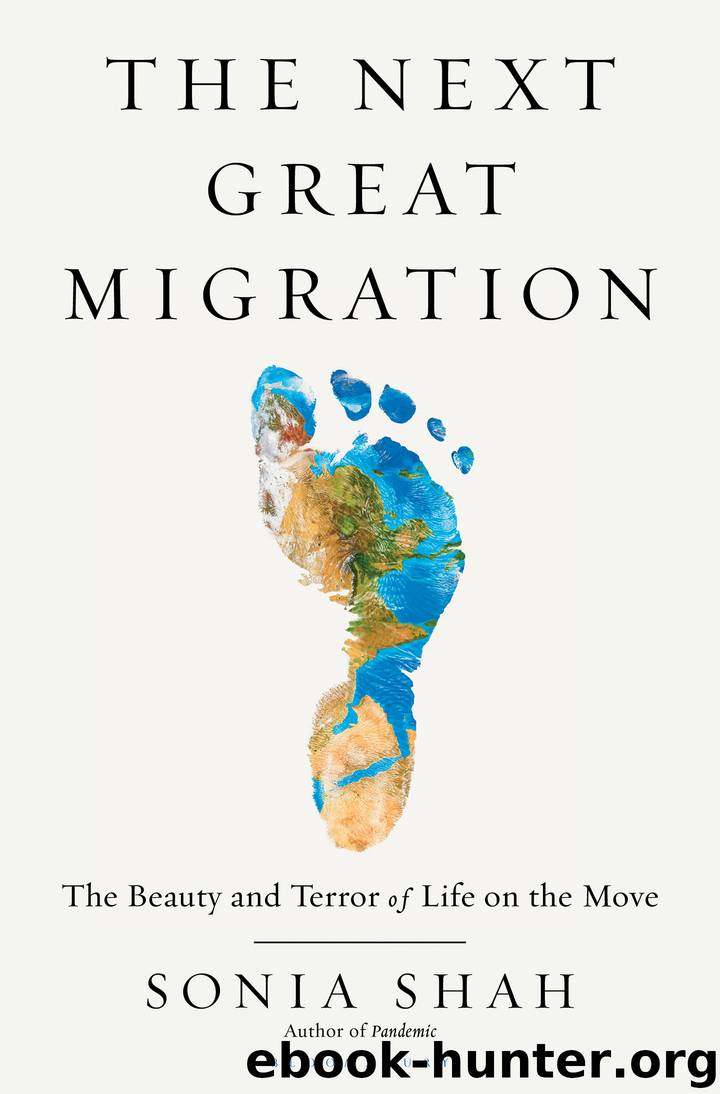The Next Great Migration by Sonia Shah

Author:Sonia Shah
Language: eng
Format: epub
Publisher: Bloomsbury Publishing
Hints that the past was neither isolated nor sedentary appeared in 2000 with results from the Human Genome Project, a multibillion-dollar program to sequence the human genome.
The sequencers had found barely any difference in any of our genes. According to their results, a paltry 0.1 percent of the sequence of the 3 billion nucleotides strung together on our of DNA differed from any one person to the next. Men and women, the short and the tall, the red-haired and the black-haired, the tongue-curlers and the droopy earlobed and the color-blind, all shared an almost identical sequence of nucleotides in their DNA. Our species had not diverged into separate branches at all. Human beings, President Bill Clinton proclaimed in the White House ceremony announcing the results, were 99.9 percent the same, “regardless of race.”
Relatively speaking, we hardly have any genes at all, the results showed. Ever since the days of Weismannism,26 scientists had believed in the commanding power of biological inheritance. Molecular geneticists had described DNA as a master molecule directing the development and functioning of our bodies as if by dictatorial fiat. The geneticist Richard Dawkins had likened human bodies to “lumbering robots,” manufactured by the sequence of nucleotides in our DNA. Genes played such a central role in our health and behavior, scientists thought, that decoding their sequence would cure cancer and revolutionize the economy. Our gene sequence would tell us “what we ‘really’ are,” recalled Jonathan Marks.
Scientists had expected the human genome to include at least one hundred thousand different genes. They knew that the genome of a millimeter-long nematode worm has around twenty thousand genes. If genes controlled our bodies and behaviors the way many suspected they did, highly complex Homo sapiens would surely have many more, they figured. But as the project proceeded, scientists had had to recalibrate their estimates of the number of genes in the human genome. In 2001 they predicted it might carry not one hundred thousand but perhaps thirty thousand genes. In the end, researchers who analyzed the number of genes revealed by the Human Genome Project sequence found just around twenty thousand—about the same number as the lowly worm.27 Whatever distinctions we noticed among us could not be encoded in our biology in any simplistic fashion, passed down intact from generation to generation. We didn’t have enough genes to spell the difference.
“No one could have imagined,”28 said one, “that such a small number of genes could make something so complex.” Fewer than ten genes, his colleague added, could separate humans from mice.
Studies of the genetics of our fellow primates29 made the biological borders between us appear even more ethereal. Ernst Mayr had distinguished between species in which biological changes from population to population were abrupt, with each group having character combinations distinct from that of others, and species in which such changes were continuous, shading imperceptibly from one to the next. Chimpanzees and honeybees were of the former type. Our genes revealed us to be of the latter.
Chimpanzees, primatologists had found,30 live in closed groups that don’t mix with other groups, even when their habitats overlap.
Download
This site does not store any files on its server. We only index and link to content provided by other sites. Please contact the content providers to delete copyright contents if any and email us, we'll remove relevant links or contents immediately.
Cecilia; Or, Memoirs of an Heiress — Volume 1 by Fanny Burney(32503)
Cecilia; Or, Memoirs of an Heiress — Volume 2 by Fanny Burney(31913)
Cecilia; Or, Memoirs of an Heiress — Volume 3 by Fanny Burney(31898)
The Great Music City by Andrea Baker(31759)
We're Going to Need More Wine by Gabrielle Union(19004)
All the Missing Girls by Megan Miranda(15787)
Pimp by Iceberg Slim(14438)
Bombshells: Glamour Girls of a Lifetime by Sullivan Steve(14024)
For the Love of Europe by Rick Steves(13628)
Talking to Strangers by Malcolm Gladwell(13297)
Norse Mythology by Gaiman Neil(13281)
Fifty Shades Freed by E L James(13189)
Mindhunter: Inside the FBI's Elite Serial Crime Unit by John E. Douglas & Mark Olshaker(9266)
Crazy Rich Asians by Kevin Kwan(9224)
The Lost Art of Listening by Michael P. Nichols(7456)
Enlightenment Now: The Case for Reason, Science, Humanism, and Progress by Steven Pinker(7274)
The Four Agreements by Don Miguel Ruiz(6704)
Bad Blood by John Carreyrou(6584)
Weapons of Math Destruction by Cathy O'Neil(6220)
